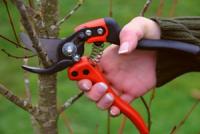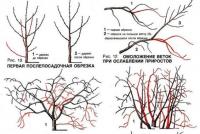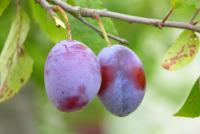Soil for onion sting. Onion sets: planting and care in the open field
Every hostess knows that onions in the kitchen are a must-have product. Golden heads are indispensable for giving the dishes a special piquancy and spicy aroma.
And it is much more pleasant to use not the purchased onions in the creation of culinary masterpieces, but your own ones, collected from the dacha bed, all the more so that it is quite easy to get and collect an excellent harvest of high-quality onion heads.
Of all the known methods, the most effective is to obtain onions from sevka. This technology has many advantages; sets less often, has a high productivity and early aging.
Dates of planting, selection and preparation of the site
Due to the resistance of the crop to cold, planting onion seedlings in open ground is carried out in the last days of April. Optimum performance for work:
- t ° air - about + 12 ° C;
- t ° of the soil layer to a depth of 10 cm –not below + 5 ° C.
In addition, to obtain early harvest It is allowed to plant onion seedlings for the winter, which is carried out in the second half of October.
For the successful development of a onion set, a warm and bright, most ventilated area is needed. Soils are preferred light, fertile, preferably neutral or slightly acidic.
According to the norms crop rotation put onions after tomatoes eggplant, potato, pumpkin and green crops. Seeding is not allowed on an old garlic bed.
The best neighbor for him will be carrot - its interaction with onions reduces the likelihood of the development of pests of both crops (onion and carrot flies). The proximity of legumes is highly undesirable. Onions successfully adjoin with other agricultural crops.
At the end of autumn, the area set aside for the bow should be cleared of weeds and dredged on the bayonet of the spade. To increase the nutritional value, the soil is filled with humus or rotted compost, and also 75% of the norm of phosphorus-potassium fertilizers (approximately 2 tablespoons of granules) are applied.
In the spring, the soil is loosened, residual fertilizer is applied and low beds are planted with a width of about 45-50 cm.
Presowing Seeding Treatment and Planting Rules
To get strong, healthy heads, onion sets should be prepared correctly before planting:
1. For planting select strong, intact onions without putrid spots.
2. To protect against early lesioning and the development of diseases, for 2 weeks before planting, sevok heated at a temperature of about + 40 ° C (you can put on the battery).
3. 24 hours before planting, the heads are pickled in a pale pink solution of potassium permanganate or doused with hot water.
4. To shorten the time of germination, cut the crown "tail" and the bottom of the prepared bulbs.
It is not worth neglecting the preparatory measures, since it is the high-quality processing of the seed material that ensures the planting of onion seedlings in the ground will bring the desired results.
Planting onion Sevka spring is as follows:
- On the surface of the prepared beds do transverse or longitudinal grooves with a row spacing of about 40-45 cm.
- If watering is required, moisten the grooves with warm water moderately.
- Heads of sevka immersed in the ground, observing a distance of 6-8 cm between them.
- Strongly deepening onions should not be their tails-tops should be seen from the ground.
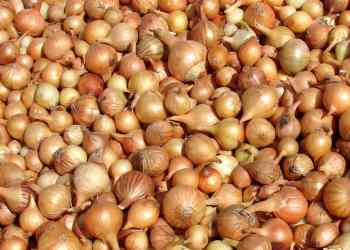
After 9-11 days young onion feathers will appear. Planting onion seedlings in the autumn is carried out on the same principle, only after the end of the procedure, the bed is recommended to mulch with sawdust or peat-humus mixture.
Care and cleaning of onions
For the full development of sevok needs proper care, which is reduced to the timely implementation of such activities as:
1. Watering - must be regular and abundant. Moisten the soil under planting is recommended 1-2 times in 2 weeks, in a strong drought 2 times in 7-10 days. After watering, a shallow loosening is carried out so that a dry crust on the soil surface does not prevent air from penetrating to the roots.
2. Top dressing - is carried out 2-3 times per season. In the first procedure, 15-20 days after planting, nitrogen fertilizers are applied ( urea, nitrophoska). After 3 weeks carry out phosphorus-potassium fertilizer, which, if necessary, can be repeated. After each power supply, carry out abundant surface watering, washing away the remnants of fertilizer from the leaves.
3. Weeding is an obligatory procedure for onions that do not tolerate the presence of weeds in the garden. Growing, weed grass does not allow moisture to evaporate, which provokes the development of processes of decay and fungal diseases.
At the first symptoms of the problem of onion plantings, treatment with special biologics is shown. In case of onions, the use of aggressive pesticides is not recommended. With the observance of agrotechnology additional measures seeding is not required.
A crop of onion turnips is harvested in August after a complete lodging of the feather. To prevent the bulbs from growing again, for 20-30 days before harvesting, they will cancel all feeding and watering.
On a sunny day, heads are dug out of the ground, dried in the sun or under a canopy, and then packed in baskets, boxes or nets. Store the crop in a dry, cool, well-ventilated place.
In this article we will explain how to plant onion sets and how to take care of them.
Talk about specific planting numbers in relation to the bow is not necessary. Sevok planted when the earth warms to a depth of 6-10 centimeters. If you focus on the weather, the early and warm spring landing can be done at the end of April.
Onions can not be planted in the cold ground, but also delayed landing is also impossible. The main reference point is the temperature of the soil, which should not be below + 12 ° C.
Preparation of planting material
It is very important to prepare correctly planting material. If sevok was purchased, it should be dried. Grown up personally and kept at a temperature below + 18 ° C - warm up. Warming up onions is a long process, carried out in several stages.
Stage 1. At a temperature of + 20 ° C, onions should be kept for 15 to 20 days.
Stage 2. Maintain onions for 8-10 hours at a temperature from + 30 ° С to + 40 ° С. It is important not to overdo it.
The heated sevok before planting is treated with a growth stimulator.
If phased preparation is not possible, immediately before planting a culture, the following procedure should be carried out:
- soak sevka in water with a temperature of + 45 ° C - + 50 ° C for no more than 10-15 minutes;
- after the above time, immediately immerse the planting material in cold water for 10-15 minutes;
- place sevok for 5-6 hours in a solution of complex mineral fertilizers.
Mandatory procedure that must be carried out before planting onion sets - disinfection. Both a weak solution of potassium permanganate and a solution of blue vitriol (35 grams per 10 liters of water) are suitable for processing.
There is a method, the so-called grandmother’s secret of planting an onion set, which is as follows:
- planting material is dried for 7 days, the temperature should be from + 20 ° С to + 25 ° С;
- before planting the bulbs are soaked for 3 hours in saline solution (2 tablespoons of salt for 2 liters of water);
- the bulbs are washed;
- sevok immersed in a dark solution of potassium permanganate for 2 hours;
- washed again;
- a little dry.
At this work on the preparation of planting for planting end.
Soil preparation
Before you prepare the soil, you need to choose a site for planting. It is important to know that the onion is a light-loving plant, so the area where it will grow should be open and well lit.
This culture is moisture-loving, but does not tolerate excessive amounts of water, so you should avoid areas where groundwater flows.
The soil for this culture begin to prepare in the fall. Onions - amateur loose, nutritious soil, so be sure to:
- dig the ground to a depth of 15 to 20 cm;
- apply fertilizer from rotted manure (can be fertilized with peat compost).
An important point is that it is necessary to fertilize the soil at this stage of soil preparation, it is strictly forbidden to add organic fertilizer to the soil before planting in order to avoid the growth of the upper part of the plant and the dormancy of the lower one, as well as the appearance of weeds. Before planting, it is contraindicated to make humus and chicken droppings.
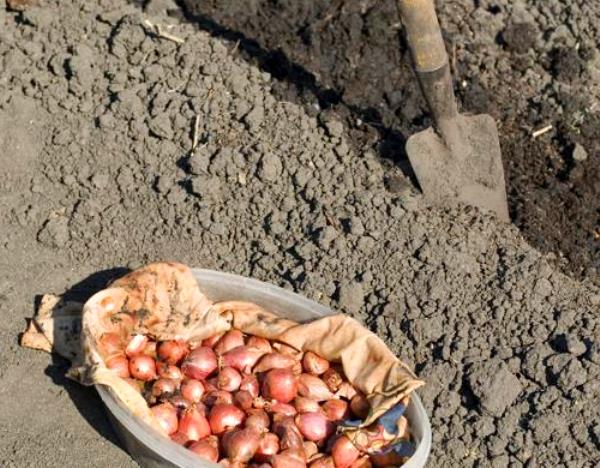
It is necessary to consider the level of acidity of the soil. If the soil is acidic, then it is necessary to conduct liming by one of the following components:
- lime;
- dolomite flour;
- ground limestone;
- ground chalk;
- wood ash.
An important point is that at the same time fertilizing the soil with manure and adding lime is contraindicated, as a result of such actions the level of nitrogen in the fertilizer decreases. It is permissible to reduce the acidity by other means.
In spring, soil preparation consists of digging with the application of mineral fertilizers. 7 days before planting onions, it is necessary to water the soil with the following solution:
- water - 10 liters;
- blue vitriol - 1 tablespoon.
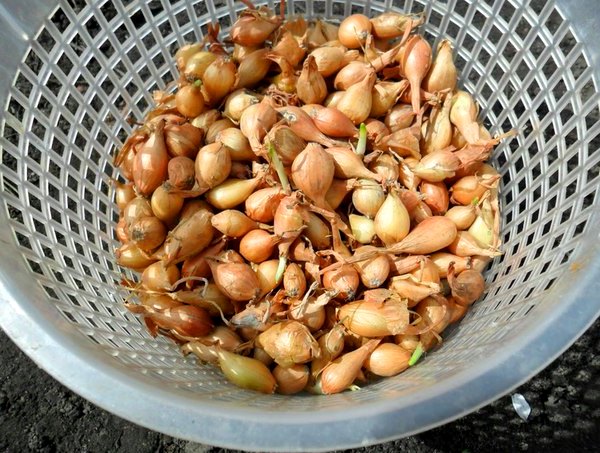
Planting and care
Before planting, sevok needs to be sorted, because depending on the size is determined by the distance between the bulbs in the garden:
- bulbs up to 1 cm are placed at a distance of 5 cm;
- half a centimeter - at a distance of 8 cm;
- bulbs up to 2 cm in diameter - at a distance of 10 cm.
As for the beds, they should be at a distance of at least 20 cm - 25 cm from each other. Planting depth is about 3-4 cm.
After the planting material is immersed in the ground, it is necessary to squeeze the latter tightly around the bulbs and cover with a layer of mulch (mulch - any available material, such as sawdust, straw, film, paper, peat, pebbles, etc.) 2-3 cm thick .
It should be noted that there is one grandmother's secret of planting onion seedlings - in a watered garden bed, before sending an onion there, you need to pour a little sand. They say that so onions will grow faster.
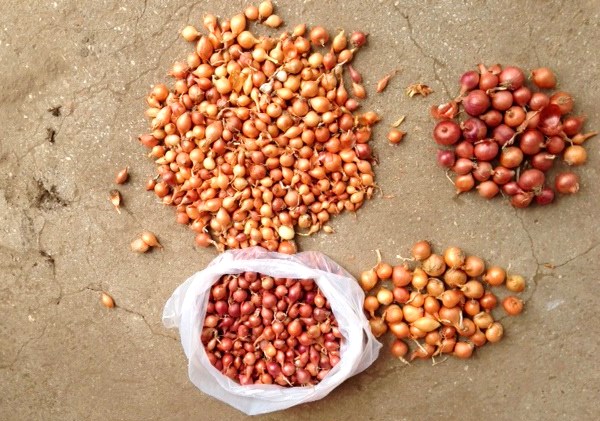
Onions, like any vegetable, have desirable and undesirable precursors.
Desirable include:
- cucumbers;
- cabbage;
- tomatoes;
- potatoes;
- those crops under which large doses of organic fertilizers are applied.
Undesirable predecessors:
- garlic;
- carrot.
In place of these crops, planting onion seedlings can be carried out no earlier than in 3-5 years.
Onion care is timely weeding, loosening and watering.
Loosening. Correctly begin the process of soil aeration before germination. The frequency of this procedure is once every two weeks in order to avoid the formation of a dense earth crust. Secondly, such a frequency of loosening will not allow the weeds to appear.
Weeding. The presence of weed grass near the onion is unacceptable, there are two reasons: the first is that the onion has a thick neck, which complicates the subsequent drying; the second is that the weed retains moisture in the soil, which is fraught with onion diseases.
Watering. Immediately after planting, in May-June, sevok watered once in 7 days. Liquid volume per 1 square. meter is on average 7-8 liters. In July, the number of waterings need to be reduced.
Top dressing. Onions - a culture that, in principle, does not need feeding, but it can be done.
For the first time, fertilizer can be applied as a slurry solution (0.5 kg per 5 liters of water) no earlier than 20 days after planting. The second option is top dressing - a solution of bird droppings (0.5 kg per 7 liters of water).
Repeated fertilizer can be carried out a month after the previous one.
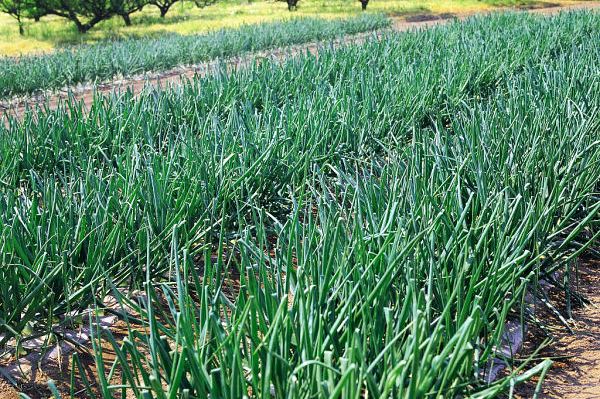
As fertilizing, dry fertilizers can be used to sprinkle the beds before irrigation.
As the statistics show, onions are a demanded culture not only in the CIS countries, but precisely in this territory the most favorable conditions for its cultivation. Often (for commercial purposes) whole fields are planted and it is clear that this is not done by people. In our technological time, many cultivators have been invented, one of which is a planter for onion sets. One such simplest machine can replace the work of fifty people.
Sazhalki for onions sevka represent as a huge machine, working in the fields, and manual devices designed for conventional gardens. Sazhalka for onion Sevka - a real find for the elderly, who already have difficulty kneeling in the beds. In addition, this device produces soil treatment. Therefore, we can say that the cultivation of culture can take place with pleasure.
In our climate they grow in two years. In the first year they sow seeds - chernushka. Onion sets grow in autumn from these seeds, and in spring next year his put on the beds. From it large bulbs grow in the fall. Onion is very popular vegetable culture most countries of the world. Grow it for a long time and use it in traditional medicine and cooking. You can grow in the garden as well as at home, on the windowsill.
Care and cultivation of onion Sevka
 This culture does not require a lot of attention in the cultivation and care. Plant will good qualityif you follow a few simple rules.
This culture does not require a lot of attention in the cultivation and care. Plant will good qualityif you follow a few simple rules.
Watering the soil
Watering planting plants is not more than twice a week, only in May and June, if there is no rain. In the second half of the growing season should not be watered, because the bulbs ripen.
Weeding and loosening between the rows
One of the important rules is to remove weeds and prevent the formation of a soil crust. If you do not remove the weeds, the growth of onion seedlings slows down. Soil crust does not allow shoots to grow smoothly and reduces the quality of the crop. Chernushka seeds can be mixed with the seeds of radish or lettuce. This helps to find out where the onion rows are located, as they ascend faster. When the onion rises, beacon plants can be removed.  The first thinning should be carried out when several true sheets appear at the shoot. Leave between them should be 1.5 - 2 cm. If this is not done, the leaves do not have time to form in sufficient quantity, and the bulbs are small.
The first thinning should be carried out when several true sheets appear at the shoot. Leave between them should be 1.5 - 2 cm. If this is not done, the leaves do not have time to form in sufficient quantity, and the bulbs are small.
Did you know? People who work in greenhouses and grow green onions are said to suffer less from catarrhal diseases even during epidemics.
Fertilization
Harvest should be in August. But if it rained often in summer, the culture can be harvested earlier, in late July. Since excessive moisture contributes to the re-germination of seed, and such a bow will be stored badly. Still need to pay attention to the color of the leaves. If they began to turn yellow, and the bulbs have reached the desired size, then you can start collecting. How to store onion sets? You need to choose a dark, dry and cool room, so that the vegetable does not sprout ahead of time. Was this article helpful? 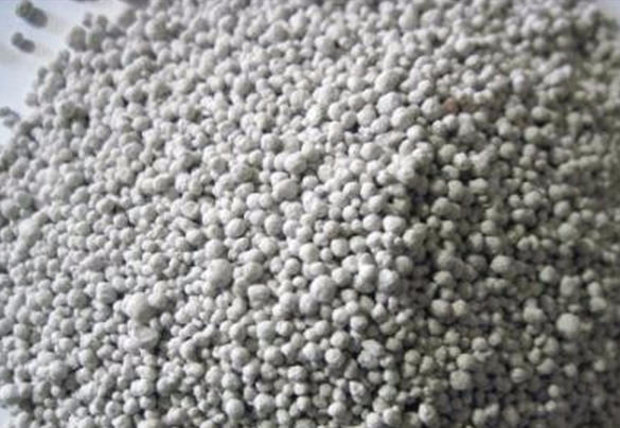 twice during the entire ripening period. If the soil is poor in nutrients, then fertilize the third time. The first time make dressing, when there are green leaves. Fertilized and potassium chloride. After a couple of weeks, a second dressing for seeding is carried out; the third time is carried out foliar feeding of crops that help better ripen. Fertilizers play an important role in the care and cultivation of cultivated plants and their subsequent yield, namely:
twice during the entire ripening period. If the soil is poor in nutrients, then fertilize the third time. The first time make dressing, when there are green leaves. Fertilized and potassium chloride. After a couple of weeks, a second dressing for seeding is carried out; the third time is carried out foliar feeding of crops that help better ripen. Fertilizers play an important role in the care and cultivation of cultivated plants and their subsequent yield, namely: 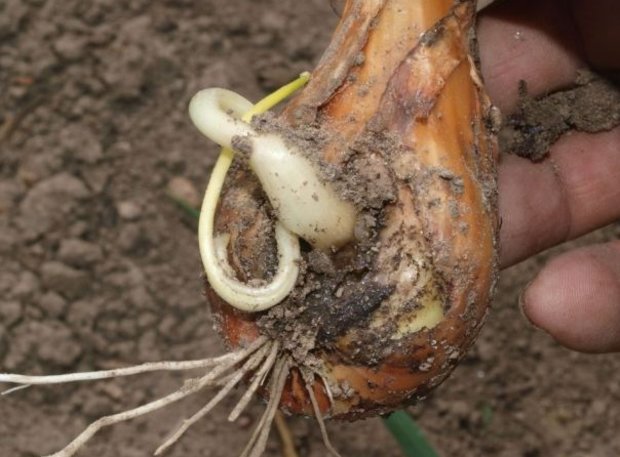 To prevent disease and pest damage, it is necessary to clean the area from weeds, dead plants, rotten fruits and leaves. All waste at the site to burn or bury in a hole. Most of the pathogenic sources are stored in greenhouses and under film covers. Therefore, every year the soil must be decontaminated.
To prevent disease and pest damage, it is necessary to clean the area from weeds, dead plants, rotten fruits and leaves. All waste at the site to burn or bury in a hole. Most of the pathogenic sources are stored in greenhouses and under film covers. Therefore, every year the soil must be decontaminated. Harvesting and storing onion seedlings
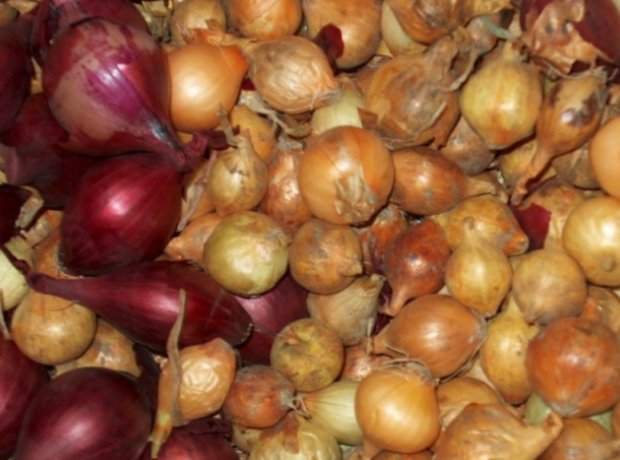 In order for the onion sets to be well preserved, you need to remember some rules:
In order for the onion sets to be well preserved, you need to remember some rules:
For storage use boxes, bags, boxes, which easily gets air. During the winter culture needs to be checked. If you get broken or moldy bulbs, they need to be removed. Sevok with wet husks can be dried. 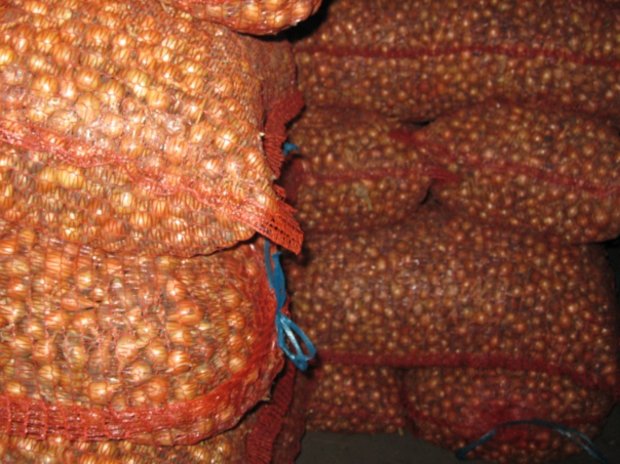 With the onset of spring, when the air temperature will be more than +10 ° C, you can start planting.
With the onset of spring, when the air temperature will be more than +10 ° C, you can start planting.
Well no

